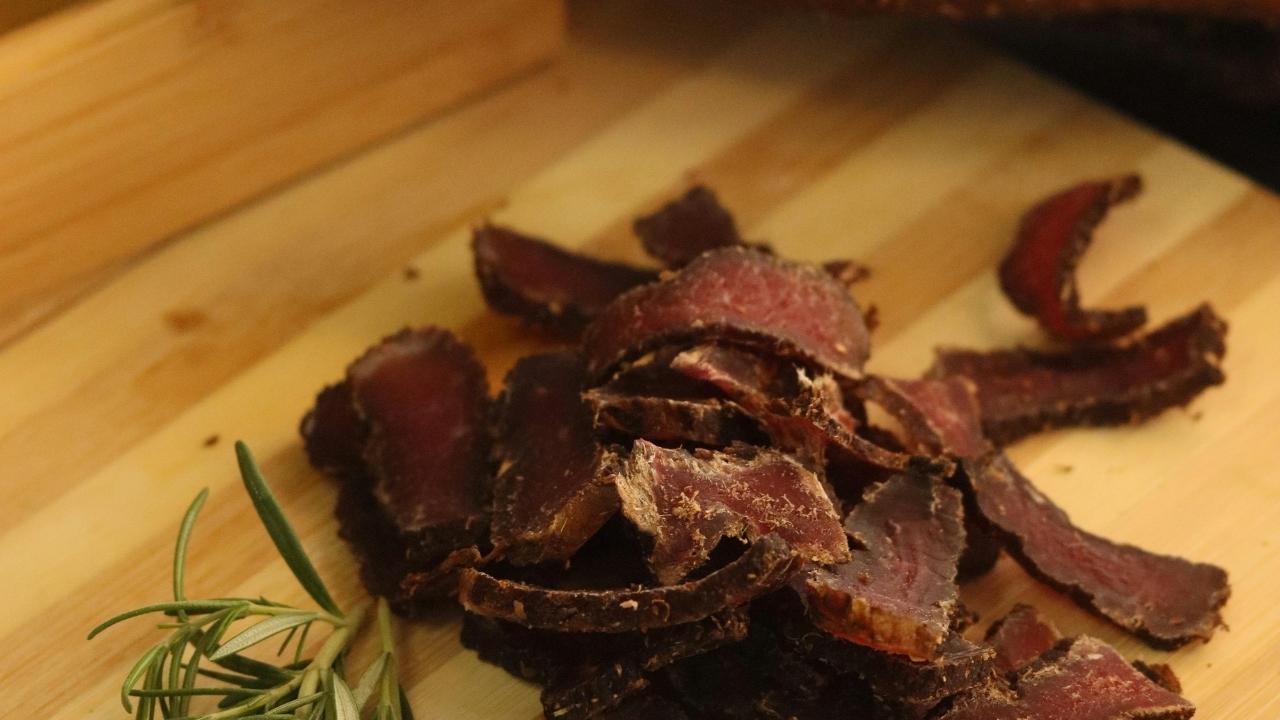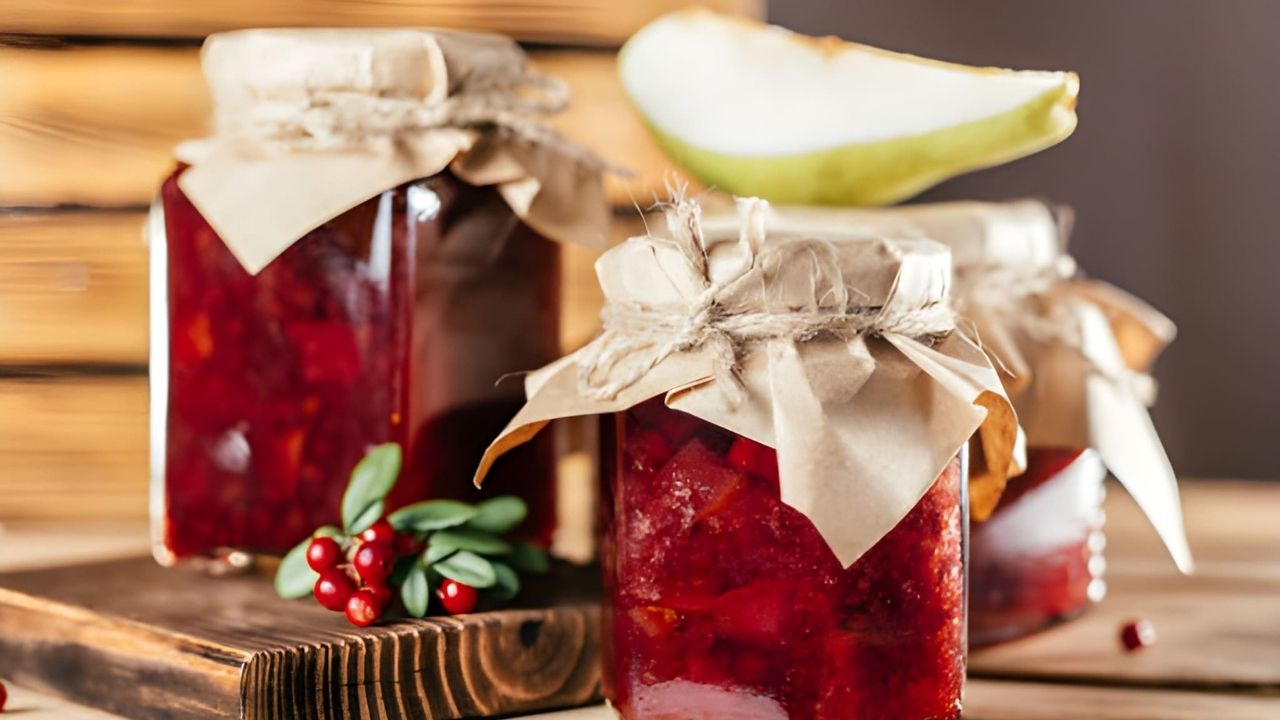Biltong, a popular South African dried meat snack, is enjoyed by many for its rich, savory flavor and unique texture. If you’re looking to learn how to make biltong at home, you’ve come to the right place. This article dives into the best biltong food recipes, with tips and variations for creating a perfect batch every time. From classic beef biltong to chicken and even game meat options, there’s something for every taste. Let’s explore the steps and ingredients you’ll need for your own homemade biltong.
What is Biltong and Why is It So Popular?
Biltong is a traditional South African snack made by air-drying meat. Unlike beef jerky, which is often smoked, biltong relies on a unique blend of spices, vinegar, and salt for its distinct flavor. The drying process preserves the meat while infusing it with savory goodness. Biltong can be made with various types of meat, including beef, chicken, and even exotic game meats like kudu or ostrich.
This snack has become a global favorite, loved for its high protein content and chewy texture. It’s perfect for any time of day—whether as a quick snack, a protein-packed addition to salads, or an accompaniment to drinks. Here are some biltong food recipes.
Classic Beef Biltong Recipe
Ingredients:
- 2 pounds beef (silverside or top round)
- 3 tablespoons coriander seeds
- 2 tablespoons black peppercorns
- 2 tablespoons brown sugar
- 2 tablespoons salt
- 1/4 cup vinegar (white or apple cider)
- 2 cloves garlic, minced
Instructions:
- Prepare the Meat: Slice the beef against the grain into strips about 1 inch thick. The size and thickness of the strips can vary, but remember that thinner strips will dry faster.
- Spice Mix: In a bowl, combine coriander, peppercorns, brown sugar, and salt. Toast the coriander and peppercorns in a dry pan until aromatic. Grind the spices to a coarse powder using a mortar and pestle or spice grinder.
- Marinate the Meat: Rub the spice mix over the meat strips. Add the vinegar and garlic, making sure the meat is well coated. Let it marinate in the fridge for at least 12 hours, or overnight for best results.
- Dry the Biltong: Hang the meat strips in a well-ventilated area, such as a drying cupboard or dedicated biltong box. Let the meat dry for 3 to 5 days, depending on the thickness and desired dryness.
Pro Tip: Make sure to turn the meat strips every day for even drying. You can also use a biltong maker or dehydrator to speed up the process.
Chicken Biltong Recipe
Ingredients:
- 2 pounds chicken breasts
- 3 tablespoons coriander seeds
- 1 tablespoon paprika
- 1 tablespoon brown sugar
- 1 teaspoon cayenne pepper
- 2 tablespoons vinegar
- 1 tablespoon salt
Instructions:
- Slice the chicken breasts into strips. Keep the slices thin to ensure they dry properly.
- Grind the coriander and paprika, then mix all the spices, sugar, and salt.
- Rub the spice mixture over the chicken and marinate in vinegar for a few hours.
- Hang the chicken strips in a well-ventilated area for 1 to 3 days, depending on the thickness.
Game Meat Biltong Recipe
For a truly unique and flavorful biltong, try using game meats like kudu, springbok, or ostrich. These meats have a leaner profile and often offer a slightly sweeter taste.
Ingredients:
- 2 pounds game meat (kudu, ostrich, or springbok)
- 1 tablespoon cumin seeds
- 1 tablespoon coriander
- 2 tablespoons salt
- 1/4 cup vinegar
- 1 tablespoon brown sugar
Instructions:
- Slice the game meat into strips. Keep them even to ensure uniform drying.
- Toast and grind the cumin and coriander, then mix them with the salt and sugar.
- Coat the meat with the spice mix, add vinegar, and let it marinate for several hours.
- Hang the meat in a cool, dry place for 2 to 5 days.
Storing Your Biltong: How to Keep It Fresh
Once your biltong is ready, you’ll want to store it properly to preserve its flavor and texture. Biltong should be kept in an airtight container in a cool, dry place. If you’ve made a large batch, consider vacuum-sealing portions for longer storage. Alternatively, you can freeze the biltong for up to 6 months.
Pro Tip: For a more intense flavor, allow your biltong to age for a few weeks after drying. The flavor develops further, giving you a richer, more complex taste.
How to Enjoy Biltong in Different Recipes
Biltong isn’t just a snack! This flavorful South African dried meat can be incorporated into various dishes, enhancing meals with a burst of protein and savory richness. Whether you’re looking for a quick snack or a meal addition, biltong can elevate your cooking in exciting and delicious ways.
Biltong Salad
A biltong salad is an excellent way to introduce the rich, savory flavor of biltong into your diet while keeping things fresh and healthy. To make a simple biltong salad, chop the biltong into bite-sized pieces and toss it with a variety of fresh greens like lettuce, arugula, or spinach. Add some juicy tomatoes, crisp cucumbers, and perhaps even some radishes or carrots for extra crunch. A tangy dressing—such as a balsamic vinaigrette or a lemon-infused olive oil—will tie everything together and balance the richness of the biltong. The combination of flavors, from the hearty meat to the fresh vegetables, provides a perfect contrast. The biltong adds an element of protein and saltiness, making the salad feel more like a complete meal rather than just a side dish. You can also sprinkle some toasted nuts or seeds for extra texture.
Biltong Sandwich
For a quick, satisfying meal, a biltong sandwich is the way to go. Layer slices of biltong with your favorite bread or rolls—try a fresh baguette, whole grain bread, or even a soft ciabatta. Add cheese to the sandwich for a creamy contrast to the biltong’s chewy texture. Cheddar or Swiss work wonderfully, but you can also experiment with softer cheeses like goat cheese or cream cheese for a more indulgent option. Fresh vegetables such as lettuce, tomatoes, and onions will add a refreshing crunch, while a spread of mustard, mayo, or even a spicy horseradish sauce can kick up the flavor. To take it a step further, add a few slices of avocado for extra richness or some pickles for a tangy bite that cuts through the savory meat.
Biltong and Cheese Pairing
Biltong and cheese is a match made in culinary heaven, providing a perfect balance of flavors and textures. The savory, spiced meat pairs wonderfully with the creamy, salty notes of cheese. Hard cheeses like sharp cheddar, gouda, or parmesan are great choices, as they hold up well against the richness of the biltong. If you prefer a milder flavor, goat cheese or cream cheese can add a smooth, soft contrast to the biltong’s chewiness. For a more adventurous pairing, blue cheese offers a bold, tangy kick that complements the umami depth of the biltong. Enjoy these pairings as part of a charcuterie board, as a snack, or even on a light meal platter with crackers, fresh fruit, or pickled vegetables.
With these simple and delicious ways to enjoy biltong, you can easily turn this traditional snack into a versatile ingredient for a variety of dishes. Whether you’re adding it to a salad, sandwich, or pairing it with cheese, biltong brings a unique depth of flavor to any meal.
Final Thoughts on Biltong Food Recipes
Biltong is a versatile and delicious treat that can be customized to suit different tastes and preferences. Whether you’re making traditional beef biltong, experimenting with chicken, or trying something adventurous like game meat, the key is to use high-quality ingredients and to allow the meat to dry properly. With the right techniques, you can enjoy this South African delicacy at home, adding your personal touch to each batch.
By following these biltong food recipes, you can easily craft your own homemade snack or incorporate biltong into meals like salads, sandwiches, and even charcuterie boards.
FAQs About Biltong Food Recipes
1. What is biltong?
Biltong is a traditional South African dried meat snack made by air-drying various types of meat, including beef, chicken, and even game meats like ostrich or kudu. Unlike jerky, which is often smoked, biltong is seasoned with a blend of spices, vinegar, and salt before being dried, giving it a rich, savory flavor and a chewy texture.
2. How is biltong different from beef jerky?
While both biltong and beef jerky are dried meat snacks, there are key differences. Biltong is typically thicker, softer, and chewier than jerky. It is seasoned with a variety of spices, including coriander, black pepper, and salt, and often marinated in vinegar. Jerky, on the other hand, is usually smoked and dried with a simpler seasoning mix. The drying method is also different; biltong is air-dried, while jerky is usually dehydrated or smoked.
3. Can you make biltong at home?
Yes, making biltong at home is relatively easy. You’ll need fresh meat (usually beef), a spice mix, vinegar, and a drying area with good airflow. After marinating the meat in vinegar and spices, you hang it up to dry in a cool, dry space for several days. You can also use a biltong box or dehydrator to speed up the process.
4. What types of meat can be used for biltong?
While beef is the most common meat used, biltong can be made with various types of meat, including chicken, ostrich, kudu, and even lamb. The seasoning and drying process are the same for most meats, although lean cuts work best for biltong.
5. How should I store biltong?
Biltong should be stored in an airtight container in a cool, dry place. It can also be vacuum-sealed for longer storage. For maximum flavor, enjoy biltong within a few weeks of making it, though it can last for months if stored correctly.



